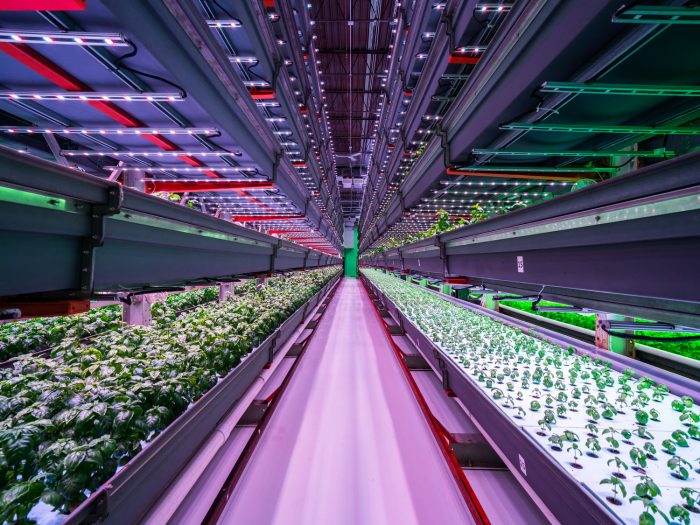Learn The Ins and Outs Of Indoors and Vertical Aquaponics! Part 2
For part 1 click this link:
Part 1
Vertical Aquaponics, Part 2:
Over this series, we’re including the information in our “Aquaponics For Millionaires” disclosure package at no charge. We’ve been selling this information package for $1,000 (because to a millionaire, that’s like a cup of coffee is to you, right?).
Let’s Talk Story About Vertical Aquaponics:
“Talking Story” in Hawaii means chatting with family, neighbors, and friends. We’re going to talk story about the high costs for lighting and air conditioning we’ve just found out about, and the relative efficiency and “waste heat” output of the different kinds of lights, so we can be sure you understand the situation.
This is the most important thing to understand about indoors growing: ALL lighting choices for ALL indoors growing technologies have the same drawback: they all put out waste heat that you have to remove with air conditioning.
In other words, you get to pay for your electricity twice: once when you buy it for the lights, and a second time to remove the waste heat the lights dump into your growing space.
(Below) Some not-efficient LED’s that help the indoor aquaponics farm Farmed Here go bankrupt in March of 2017.
As we would say in our local pidgin: “Dis lighting ting is a real bummah, brah!”. If you don’t pay attention and understand the lighting issues and trade-offs, your indoor grow can get so economically out of hand it can go bankrupt in a short time.
LED LIGHT COMPARISON:
Let’s look at an example: Let’s compare a “top-end” 44% efficient 100-watt LED to an “average” inexpensive 100-watt LED that is 15% efficient. The top-end LED puts out 44 watts of light and 56 watts of waste heat.
Even though the average LED also uses 100 watts of power, it only puts out 15 watts of light, so you need three of them to put out the same amount of light as the 44% efficient, top-end LED puts out.
In other words, you have to buy three of the “inexpensive” lights to equal one of the “top-end” LED’s.
PAR LIGHT:
In addition, these inexpensive lights do not put out as much PAR light as the top-end LED’s do. What’s PAR light? PAR stands for Photosynthetically Active Light; that’s light that the plants actually use.
In addition to putting out less light, the inexpensive LED’s also put out less PAR light, so you really need four of them to equal the amount of usable light that one 44% efficient LED puts out. They don’t look so inexpensive now, do they, if you have to buy four times as many!
WASTE HEAT:
That’s not the end of the story: an LED that’s only 15% efficient puts out 85% waste heat. That’s 85 watts of waste heat from a 100-watt light. Since you have four of these lights, you are putting out 340 watts of waste heat (4 X 85 watts = 340w).
GETTING RID OF THAT WASTE HEAT:
At 340 watts of waste heat, the 4 “inexpensive” LED’s put out SIX TIMES AS MUCH WASTE HEAT AS THE “TOP-END” LED, which only puts out 56 watts of waste heat!
I hate shouting with all-caps, but this is REALLY important: can you see it yet? If you choose your lights based on price rather than efficiency, you have to buy four times as many inexpensive, inefficient lights; and that’s expensive!
Because those inefficient lights put out 6 times as much waste heat, you’ll also have to buy an A/C unit 6 times bigger, and spend 6 times as much paying for electricity to run it, FOREVER!
Does that mean that if I buy 44% efficient LED’s, my indoors aquaponic farm will be sure to make money?
It’s too early to tell; because we’ve just scratched the surface of the issues you’ll have to deal with.
More in Part 3 of this series!
Now, isn’t that naturally-lit aquaponic operation in a greenhouse starting to look more attractive?
ทดลองเล่นสล็อตฟรี ในยุคที่เกมส์สล็อตออนไลน์ มีองค์ประกอบหลายๆอย่าง ที่เป็นตัวทำให้นักลงทุน ตัดสินใจกับการเล่นเกมสล็อตจาก เว็บนี้ มากกว่าที่อื่นๆ การทดลองเล่นสล็อตฟรี ทำให้ผู้เล่นติดใจ และ กลับมาเล่นกับ สล็อตเว็บตรง ที่นี่ ซ้ำ
เดโม่ pg เว็บตรงไม่ผ่านเอเย่นต์ มีทดลองเล่นสล็อตค่ายเกมยอดฮิต เดโม่ pg เป็นแหล่งรวมตัวเกมส์ สล็อตยอดฮิต แตกหนัก แตกดี ที่สำคัญคือ การเลือกเว็บสล็อตสายตรงไม่ผ่านเเย่นต์ เชื่อถือได้มั่นคงปลอดภัยแน่นอน และ ตัวเกมส์สล็อตยอดฮิต ก็เป็นหนึ่งในตัวเลือกสำหรับนักลงทุนเช่นกัน
รวมโปรสล็อต50% เป็นหนึ่งในจุดขายของค่ายเกมนี้ เป็น สล็อตเว็บตรง อันดับ1หลายแห่งในไทย และ ต่างประเทศ โดยไม่ผ่านเอเย่นต์ ผู้เล่นจึงมั่นใจได้ในความปลอดภัย และ อัตราการจ่ายที่ยุติธรรม รวมโปรสล็อต จากเว็บตรงนี้ มีรวมเกมทุกค่าย ที่ผ่านการตรวจสอบ จากองค์กรเกมระดับโลก ทำให้ผู้เล่นมีความมั่นใจว่า เล่นแล้วได้เงินจริง ไม่มีล็อคยูสแน่นอน!
รวมโปรสล็อต pg 50% เป็นหนึ่งในจุดขายของค่ายเกมนี้ เป็นโปรโมชั่น จากสล็อตเว็บตรง อันดับ1หลายแห่งในไทย และ ต่างประเทศ โดยไม่ผ่านเอเย่นต์ ผู้เล่นจึงมั่นใจได้ในความปลอดภัย และ อัตราการจ่ายที่ยุติธรรม ค่ายเกมนี้ ยังผ่านการตรวจสอบ จากองค์กรเกมระดับโลก ทำให้ผู้เล่นมีความมั่นใจว่า รวมโปรสล็อต pg 50% นี้ เล่นแล้วได้เงินจริง ไม่มีล็อคยูสแน่นอน!
Your height is ideal.
Visit UsTelkom University
What audience is the content of Part 2 aimed at, and how does it cater to their learning needs in the field of aquaponics?